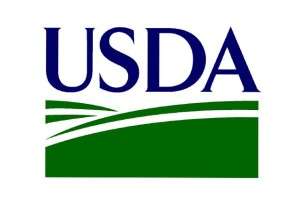As reported in High Plains Journal. What a difference a couple of marketing years makes when it comes to the Conservation Reserve Program enrollment.
In the fall of 2019, as farmers were struggling with lower commodity prices and an extremely uncertain export outlook, the U.S. Department of Agriculture announced plans for a new CRP signup. It was the first general signup since 2016 and officials expected landowners to sign up for this long-term land-idling program in the largest numbers in at least a decade.
Through CRP, farmers and ranchers receive an annual rental payment for establishing long-term, resource-conserving plant species, such as approved grasses or trees, to control soil erosion, improve water quality and enhance wildlife habitat on cropland. Farmers and ranchers who participate in CRP help provide numerous benefits to the nation’s environment and economy.
In March 2020, then Agriculture Secretary Sonny Perdue announced the acceptance of more than 3.4 million acres into that CRP signup period. This included offers for State Acres for Wildlife Enhancement, which allows producers to install practices that benefit high-priority, locally developed wildlife conservation objectives using targeted restoration of vital habitat. It did not include signups for continuous CRP, Conservation Reserve Enhancement Program, CRP Grasslands and the Soil Health and Income Protection Program, which were ongoing.
At over 3 million acres, those signup numbers were strong; however, enrollment did not eclipse the 4.3 million acres enrolled in 2010, the largest in recent history, and certainly didn’t come close to the 16.5 million acres accepted in 1997, the largest general signup since the program was created in the 1985 farm bill.
Fast forward to 2021 when commodity prices are substantially higher and land prices are skyrocketing in many parts of the country. Both represent strong headwinds for a program that might tie up land for 10 to 15 years.
Still, the Biden administration announced plans to increase payment rates and offer new financial incentives in a bid to spur landowners to enroll 4 million more acres into the CRP.
The higher payment rates and expanded incentives will be combined “with a more targeted focus on the program’s role in climate change mitigation” at a total additional cost of $300 million a year, the White House said this spring.
In conjunction with a White House climate summit this spring, Agriculture Secretary Tom Vilsack announced a series of financial incentives to help attract more CRP acreage. USDA offered a 10% “inflationary” adjustment to the county payment rates and also set a minimum payment rate for CRP grasslands of $15 an acre.
Payments moved down in some counties but there were significant increases in others. For example, the average 2021 CRP rental rates in Jefferson County, Arkansas jumped from $83 an acre to $102 an acre. In Cloud County, Kansas, rates increased from $55 an acre to $83 an acre and in Traill County, North Dakota, rates moved up from $101 an acre to $112 an acre.
“CRP is a powerful tool when it comes to climate mitigation, and acres currently enrolled in the program mitigate more than 12 million metric tons of carbon dioxide equivalent,” the white House said in a statement. “If USDA reaches its goal of enrolling an additional 4 million acres into the program, it will mitigate an additional 3 million metric tons of CO2 equivalent and prevent 90 million pounds of nitrogen and 33 million tons of sediment from running into our waterways each year.”
Falling short
In August, the USDA announced that 2.8 million acres were accepted for their ambitious roll-out, an enrollment far short of the 4 million acres the Biden administration was aiming for as part of its effort to use farmers to help reduce U.S. greenhouse gas emissions.
About 1.9 million acres will be enrolled as part of the general signup that ended in July, and another 897,000 acres were accepted under the continuous signup rules, USDA’s Farm Service Agency said on Aug. 23.
The average payment rate for the 1.9 million acres accepted into the program through the general signup will be $53 per acre.
Additional acreage is expected to be enrolled through the continuous signup process and through the CRP Grasslands signup, which closed last week.
But the program will likely remain well below the cap of 25.5 million acres set by the 2018 farm bill for fiscal 2022, which starts Oct. 1. About 20.6 million acres are currently enrolled in the program, and contracts on 3 million acres are scheduled to expire on Sept. 30.
FSA Administrator Zach Ducheneaux acknowledged that, even with program improvements, USDA will still be about 4 million acres below the enrollment target. But he put a positive spin on the signup numbers, noting that, “The changes we made this spring have put us on the path to reverse this trend,” of smaller enrollments.
“The CRP benefits for producers, sportsmen, wildlife, conservation and climate are numerous and well documented. We cannot afford to let them to be left on the table,” he added.



